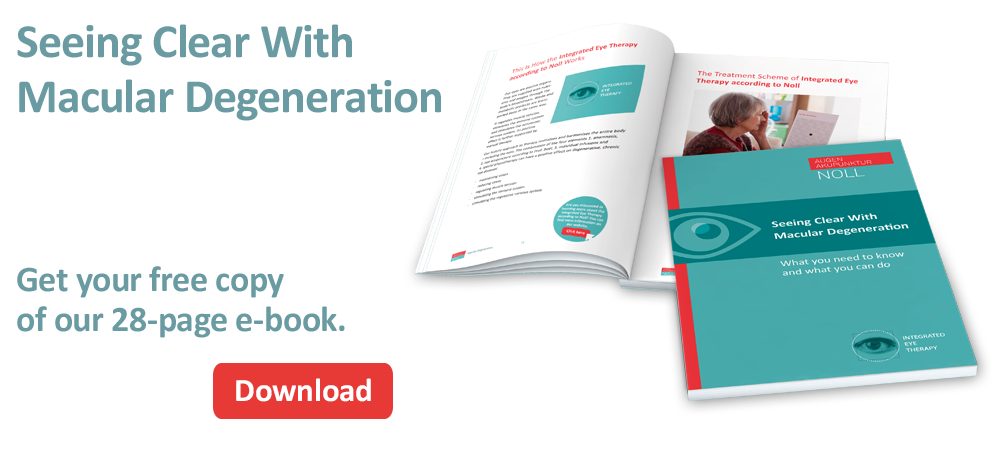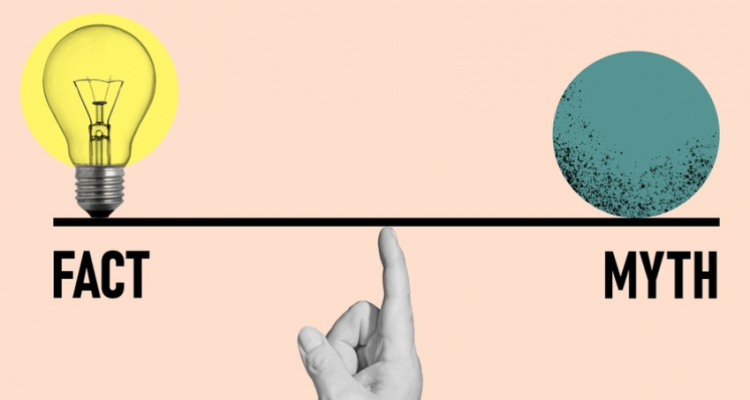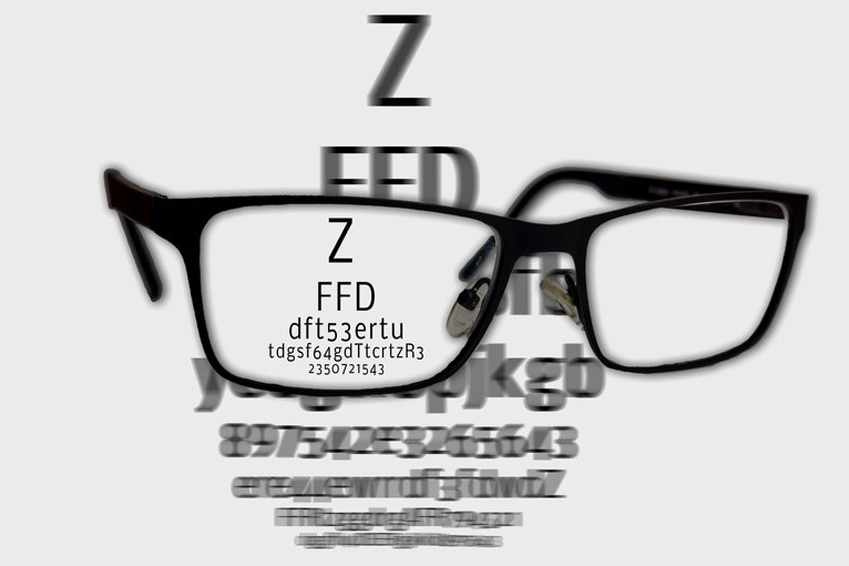Macular degeneration is a common eye disease that is often associated with misunderstandings and misconceptions. In this news, we will shed light on seven common myths about macular degeneration and clear them up in a scientifically sound way.
These myths range from the assumption that this disease only affects older people to the misconception that glasses or eye exercises can cure it.
It is crucial to clear up these misconceptions as sound education and early detection of macular degeneration is crucial to protect vision and receive the best possible care.
These myths have emerged from everyday practice and medical history discussions with our patients at the Noll Eye Acupuncture practice. We’ll start with Myth 1: “Macular degeneration only affects older people.”
Macular degeneration is an age-related eye disease that can affect vision. There are some myths and misconceptions surrounding the diagnosis of this condition. Here are seven common myths about the diagnosis of macular degeneration:
Myth 1: “Macular degeneration only affects older people”.
Fact: Macular degeneration is an age-related eye disease in which the function of the macula, the central area of the retina, is impaired.
It is true that macular degeneration is more common in older people, especially those over the age of 50 or 60. This is due to the natural ageing process of the eye, which is called age-related macular degeneration (AMD).
But there are also many cases where younger people are affected. Often due to genetic mutations, this is then called juvenile macular degeneration. People who have been very short-sighted since childhood are also at risk of developing macular degeneration at a very young age. This underlines that the disease is not exclusively limited to old age.
Early detection and prevention Although the risk of macular degeneration increases with age, it is important to emphasise that timely diagnosis and certain preventive measures can help to minimise the risk or slow down the progression of the disease.
 Myth 2: “If my vision is stable, I don’t have macular degeneration.”
Myth 2: “If my vision is stable, I don’t have macular degeneration.”
Fact: Macular degeneration can be asymptomatic in its early stages, and seemingly stable vision does not necessarily mean that macular degeneration is not present. To explain this myth more scientifically, it is important to understand how macular degeneration progresses and how it can affect vision:
Early stages of macular degeneration
In the early stages of macular degeneration, small deposits called drusen can accumulate under the retina. These drusen can damage the photoreceptors in the macula without causing obvious symptoms such as blurred vision or distortion. People at this stage may have seemingly stable vision.
Progression of macular degeneration
Macular degeneration can get worse over time, especially if left untreated. Over time, abnormal blood vessels (in wet macular degeneration) may develop or the drusen may become larger, leading to deterioration of vision.
This process can be gradual and lead to late stages of macular degeneration where vision is significantly impaired.
Regular eye examinations
The importance of regular eye examinations cannot be overstated. An ophthalmologist or retina specialist can use specialised tests and imaging techniques to detect changes in the macula even before symptoms appear.
Early diagnosis allows for early treatment, which is critical to slowing the progression of the disease and preserving vision.
Self-monitoring
People who are at increased risk for macular degeneration should also self-monitor their vision. Any changes such as blurred vision, distortion or lack of clear detail in the central field of vision should be checked out immediately by a doctor.
In summary, this myth means that macular degeneration often causes no obvious symptoms in its early stages and vision may appear stable at first.
Therefore, especially older people and people with risk factors, such as family history, should have regular eye examinations to detect changes early and have the best chance of successful treatment. Apparently stable vision is not a reliable sign that macular degeneration is not present.
Myth 3: “There is no treatment for macular degeneration.”
Fact: This myth is not correct. Although there is no cure for macular degeneration, there are various treatment options available, especially for the wet (exudative) form of macular degeneration. But also for the dry form of macular degeneration, natural medicine offers possibilities to support the eyes so that the course of the disease is slowed down.
In the case of wet macular degeneration, there are various treatment options available from conventional medicine:
Anti-VEGF therapy
In wet macular degeneration, certain proteins called vascular endothelial growth factors (VEGF) play an important role in the development of abnormal blood vessels under the retina.
These abnormal blood vessels are responsible for the deterioration of vision. Anti-VEGF therapy involves injecting drugs such as ranibizumab, bevacizumab or aflibercept into the eye. These drugs block VEGF and can slow the progression of the disease, and in some cases even improve vision.
Photodynamic therapy (PDT)
This method involves injecting a light-sensitive drug into the vein, followed by the application of a special laser to the abnormal blood vessels. PDT can be used in selected cases of wet macular degeneration to close the blood vessels and minimise damage to the retina.
Laser therapy
In some cases, laser treatment may be considered to destroy or seal abnormal blood vessels under the retina. However, this method is used less frequently and has some limitations.
Eye acupuncture and naturopathy
Naturopathy offers various treatment options for macular degeneration, not only for the wet form, but also for the dry form. Exercise and nutrition play an important role and support with appropriate micronutrients is necessary. Exercise and nutrition play an important role and support with suitable micronutrients is necessary.
There is evidence of this in the so-called ARED study. One should not disregard treatment with acupuncture. There are different procedures with which the blood circulation in the eye can be stimulated. This restarts the metabolic processes. Techniques in physiotherapy can also help sufferers regenerate their eyes.
It should be noted that the choice of treatment depends on several factors, including the stage of macular degeneration, the type of abnormal blood vessels and other individual health factors.
Early diagnosis of macular degeneration and treatment are critical to slowing the progression of the disease and preserving vision.
The dry form of macular degeneration, which usually involves the accumulation of drusen on the retina, does not require specific drug treatment. However, certain nutritional supplements and lifestyle changes can help reduce the risk of progression.
Myth 4: “A one-time eye exam is enough to rule out macular degeneration.”
Fact: The myth that a one-time eye exam is enough to rule out macular degeneration is false and based on a misunderstanding of the complex nature of this eye disease. Macular degeneration develops over time and may be asymptomatic in its early stages. A single examination can only assess the current condition of the macula and miss changes later.
Diagnosis of macular degeneration requires special tests and imaging techniques such as OCT and fluorescein angiography to detect changes in the macula. There are different stages and forms of macular degeneration, and a single examination cannot always determine the exact form and stage.
People at increased risk should be screened regularly. Treatment of macular degeneration is most effective if it starts early. Therefore, regular monitoring and specialised diagnostic procedures, if necessary, are important.
Early detection and timely intervention are crucial to preserve vision and slow the progression of the disease.
Myth 5: “Macular degeneration affects both eyes at the same time”.
Fact: The myth that macular degeneration necessarily affects both eyes at the same time is incorrect. Macular degeneration is a complex eye disease that can develop asymmetrically. In most cases, it starts in one eye before spreading to the other.
There are two main forms of macular degeneration: the dry (atrophic) form and the wet (exudative) form. The dry form often develops gradually and may only affect one eye at first. The wet form can occur more suddenly and is also usually confined to one eye, although it can cause more severe vision problems.
Individual risk factors and influences, such as genetic predisposition, lifestyle and environmental factors, play an important role in the development and progression of macular degeneration. These factors can vary from person to person and can cause the effects of the disease to show up differently in the two eyes.
It is important to emphasise that treatment is usually targeted at the affected eye or eyes. Therefore, people should have regular eye examinations for both eyes to detect changes in the macula early and take appropriate measures to protect vision in both eyes.
Myth 6: “Macular degeneration only affects people with a family history.”
Fact: Family history, especially if close relatives such as parents or siblings already have macular degeneration, can actually increase the risk of a person developing the disease themselves. This is because genetic factors can play a role in susceptibility to the disease.
There are certain gene variants that are associated with a higher risk of macular degeneration, and these variants can be passed on within families.
However, it is important to stress that having a family history of the condition does not mean that someone will inevitably develop macular degeneration.
There are many factors that influence individual risk, including environmental and lifestyle factors. Even if there are known cases of macular degeneration in the family, it does not mean that every family member will develop the disease.
However, people with a family history should pay special attention to their eye health and have regular eye exams to detect changes in the macula early.
Overall, family history is a risk factor for macular degeneration, but it is not the only factor. This disease is the result of a complex interaction of genetic, age-related, environmental and lifestyle factors.
Therefore, people, regardless of their family history, should take proactive measures to maintain their eye health to minimise the risk of macular degeneration.
Myth 7: “Glasses or eye exercises can cure or prevent macular degeneration”.
Fact: The myth that glasses or eye exercises can cure or prevent macular degeneration is based on a fundamental misunderstanding about the nature of this eye disease and the role of glasses and eye exercises in eye care.
Eyeglasses and macular degeneration
Eyeglasses are optical devices used to correct refractive errors such as nearsightedness, farsightedness or astigmatism. Macular degeneration, however, is not a defect of the eye.
It affects the macula, the central area of the retina responsible for sharp vision. Glasses can neither cure nor directly influence macular degeneration.
Eye exercises and macular degeneration
Eye exercises usually focus on training the eye muscles and improving general vision. Eye training is not designed to treat or prevent diseases of the retina or macula.
Macular degeneration is an age-related disease in which the underlying causes are complex and varied, and it extends beyond the muscles of the eyes.
In summary, macular degeneration cannot be cured or prevented by glasses or eye exercises. Instead, maintaining a healthy lifestyle and regular monitoring of your eye health by an ophthalmologist is crucial to minimising the risk of macular degeneration and receiving the best possible care.



Leave a Reply